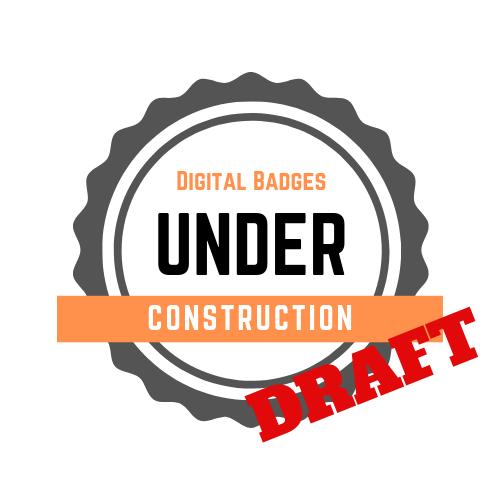In the first post of this series, I outlined some of my general reading habits, and in the second, and third, I was thinking about some of the (semi) automated or organization newsletters that I get on a regular basis. Without bots or a whole team to help move things along, I am always interested in the ways that other educators put together their regular newsletters (as I think about if and how I might choose to create one of my own).
There are three that I receive — and read — regularly. Let’s look at each in turn:
Monica Burns’ Class Tech Tips

Monday afternoons at 3:45 EST, right at the end of the school day, Burns’ Class Tech Tips hits my inbox. In the top segment of the newsletter, she points directly back to her blog, and each of those posts are usually about a specific teaching strategy and/or tech tool. Concise and focused, she makes it clear when she is getting compensation for affiliate links, and promotes her own books. Still, she makes a point to send the reader toward freely available content, both on her blog as well as other education-related sites. To that end, I appreciate that she is both promoting her own work in a reasonable way, sharing openly-available resources, and still figuring out ways to monetize the blog.
More importantly, her voice speaks to the harried classroom teacher, though not in an immediate, “do this, get that” kind of instantaneous reward kind of way. For instance, one post on the use of Adobe Spark (Renamed Creative Cloud Express in June 2022) — and a subsequent webinar she offered for free — provides at least four different lesson ideas, all of which could be a one-day, one-time lesson or extended in useful ways. In short, her posts are timely and useful, and they help me see what is happening in the day-to-day conversations about educational technology.
Tom Liam Lynch’s Gradgrinds

A longtime friend and colleague through NCTE, Lynch’s writing has always fun to read and provided me with critical insights on the role of technology in education, specifically in ELA. Every Tuesday morning at 7:00, Lynch shares his latest thinking on recent articles and updates on projects. I appreciate that he offers these quick takes, and his headlines and taglines usually capture the gist of things. For instance, in “Is TV to Blame for Older People—Not Youth—Falling for Fake News? A Study Suggests Yes” he points to an article in the Atlantic and cites a Pew report. Good stuff, delivered in an intellectually humorous manner (coupled with a screenshot from the Simpsons).
In fact, it is interesting to me to see what, if anything, Lynch reports on that I may have seen earlier in Downes’ daily updates. If both of them are talking about it, and I hadn’t read it yet, I will be sure to go back and open the link. Many posts are a “less than a minute” read, yet in that short space Lynch points to other resources and usually leaves me with a more substantive idea to ponder or question to ask. While there are a few too many “Share Gradgrind’s with a friend or colleague” notes peppered throughout the newsletter, I understand that could be just a part of the normal template he uses. He, too, notes that he uses affiliate links.
Doug Belshaw’s Thought Shrapnel

Though I have only met Belshaw briefly at an LRA event, I do appreciate his perspectives on digital literacy and, of course, through his regular Thought Shrapnel newsletter. As another educator and scholar who uses MailChimp, it makes me wonder if that might be a good option for me to explore next. Also, in a trend I am seeing many other places, Belshaw makes a clear call to “become a patron” through Patreon. Hitting the inbox at 1:30 AM EST on Sunday mornings, I can expect to see some insights from Belshaw each weekend, though he has taken a break during December.
In terms of the content, Belshaw’s commentaries are normally longer, sometimes quite a few paragraphs with embedded quotes and hyperlinks. These, from what I can tell, are not a verbatim repeat of what appears on his website, so it is good to see that the content here is different from what I would see in an RSS feed or daily aggregated newsletter of some kind or another. Also, I appreciate the insights that he offers and new directions in which he points my reading. Like Lynch, I may see a link from Belshaw that was earlier reported by Downes, and it makes me want to ensure that I have my browser ready for more tabs.
For each of these newsletters, I would like to say that I devote as much time to reading them as the authors who composed them put into the writing process. However, I know that this simply isn’t the case, even when I am able to devote time to reading through a full issue of any one of them. Still, as I have tried to note throughout this series, I appreciate what these colleagues offer and, though I am not quite at the point where I am willing to click through on sponsored posts and affiliate links (see my own policy on this), though I do begin to wonder if I should. I pay the professional journalists for their expertise… so, shouldn’t I pay my colleagues for their expertise? I am still struggling with this.
At any rate, this dip into my daily digital reading habits has been helpful for me as I think about how I triage my inbox, make use of other news sources, and reconsider how I might set up my RSS feeds again in the new year. For this next week, I will be shifting my focus away from reading all the daily news and, instead, into a book that I will be using with my EDU 807 students this semester, Neil Selwyn‘s Distrusting Educational Technology: Critical Questions for Changing Times.

This work is licensed under a Creative Commons Attribution-NonCommercial-ShareAlike 4.0 International License.




 This past fall semester provided me with an opportunity to teach an undergraduate honors seminar, focused broadly on the role of technology in our personal and professional lives.
This past fall semester provided me with an opportunity to teach an undergraduate honors seminar, focused broadly on the role of technology in our personal and professional lives.




